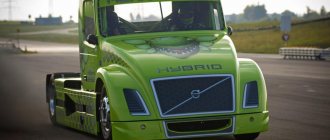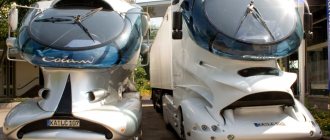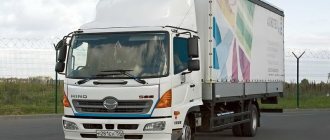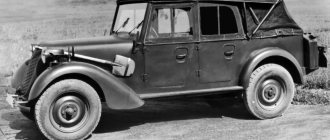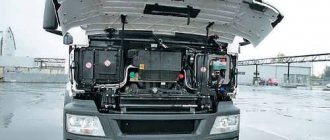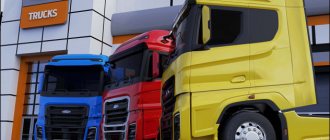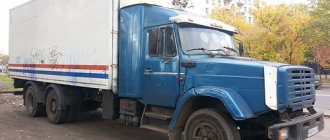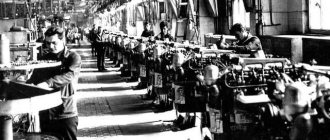Scania
Scania model range includes trucks and tractors for transportation over any distance, as well as special-purpose vehicles (firefighting, utility, defense) and for construction work.
Scania offers hundreds of truck variants ranging from 230 to 730 horsepower. Thanks to the modular system that Scania follows in its design policy, it is possible to produce cars that meet the individual needs of customers. The modular principle and, as a result, the unification of components and assemblies lead to increased functionality and performance of vehicles. A wide range of transmissions are available, from classic 4x2 to 10x4, including integral 4x4 and 8x8.
Scania trucks have become a benchmark for durability, poise and power, achieved through the widespread use of large displacement turbo diesel engines since 1972. Scania is the first manufacturer to introduce and further improve this technology on the engines of heavy-duty vehicles, thereby setting the tone in European engine building, earning its vehicles the title of “king of the roads.”
Scania 3-series / Scania 3 series
of Scania Series 3 trucks entered the market in 1987 as the successor to the 2 Series, and has been in production for 10 years. The range includes heavy trucks models 93, 113 and 143 with a gross weight of 17 to 32 tons, equipped with 6-cylinder turbodiesels with a displacement of 9, 11 and 14 liters. This generation perfectly illustrates one of the main characteristics of the Swedish automaker - innovation.
It was on the engines of Series 3 representatives that for the first time in Europe the Electronic Diesel Control (EDC) electronic fuel injection system was used, which brought Scania the first prize for Truck of the Year '89 (Truck of 1989). Next year, an innovative turbo-compound diesel engine with a record efficiency of 46%, reduced fuel consumption and 20% exhaust gas recovery will be introduced. The innovative Streamline cabin, thanks to which Scania designers managed to reduce the air resistance coefficient by 15% and fuel consumption by 4-5%, also appears for the first time in the 3 Series vehicle configuration.
These are hooded cabs that entered production in 1991. The most common type of cabin is without a hood, with two berths. It is also noteworthy that the cabins recline using a hydraulic mechanism.
In Russia, the Third Series of Scania is in significant demand and is still in active use, which is the best proof of its endurance. Undoubted performance, ease of maintenance and repair, an acceptable level of comfort are important qualities that cannot be neglected when choosing a truck. Scania 3-series is also distinguished by a variety of chassis options, allowing a wide choice of vehicles according to their intended purpose - truck tractors, utility and delivery trucks, flatbed and special vehicles.
Scania 4-series / Scania 4 Series
The fourth series or fourth generation of Scania replaces the third series in 1996 and is produced until 2004, when the PRG range appears.
A distinctive feature of Series 4 is a completely updated exterior, the work of Italian designers from the Bertone studio. From the front, the cars take on a square shape, merging further into more rounded and soft lines. At the same time, special attention is paid to the reliability of the vehicles - a rigid, durable cab frame, reinforced side and rear walls.
In the new cab design, the radiator grille is divided into two parts horizontally. The lower one is folding, which makes access to the windshield easier, and also provides additional convenience to the driver in the form of an external bench. The cars are standardly equipped with three types of cabs: Day cab (day cab), Highline (extended), Topline - the most spacious, with a high roof and two berths.
The Scania Fourth Series includes medium-tonnage and heavy trucks with a gross weight from 18 to 48 tons in more than 300 variants of 2-, 3- and 4-axle base chassis, equipped with 6-cylinder diesel engines with power from 220 to 580 hp. : DSC9 – 220-310 hp; DC11 – 24-valve, 340-380 hp; DSC12 – 360-420 hp; DSC14 V8 - 460-530 hp; DC16 V8 – up to 580 hp
Excellent performance and engine efficiency are the result of high torque at low speeds, as well as the implementation of the Opticruise transmission control system, which ensures optimal fuel consumption and reduced exhaust emissions. Information about the engine volume of cars of the fourth series is present in the indexing: 94, 114, 124, 144, where the last digit means that this is a car of the 4 series, and the first digits are the rounded engine volume. For example, 114 is an 11-liter 4-series engine.
The letters indicate vehicle types (chassis class): L – long-haul tractors, D – trucks for regional transport, C – vehicles for construction work, G – vehicles for heavy-duty use. The 3-digit number on the opposite corner of the front panel of Scania cars indicates the engine power in horsepower.
Scania truck review
Swedish Scania vehicles are one of the most popular trucks in the world today. Initially focusing on superior quality, Scania continues to follow this strategy to this day and produces vehicles that can compete with European brands. In this article we will talk about the main series of trucks of the Swedish company.

Series P
These are classic Scania trucks. Trucks of this series are used by large construction, furniture and highly specialized companies for regional and local cargo transportation. Scania P series trucks are great for short trips. Due to the small size of the vehicle, the carrying capacity increases. The big advantage of the Scania P series is its economical fuel consumption and trouble-free operation during operation. The driver's seat is equipped in such a way that it is as comfortable and convenient as possible while driving - an excellent view of the road is provided and a seat with many adjustments is installed.

Series G
These trucks followed the P-series. They continued the company's tradition of being ahead of the curve and acquired an improved set of capabilities for relatively long-term cargo transportation. G-Series trucks are purchased by construction and specialty companies to transport their goods throughout the country. Combining a functional, large cab and compact external dimensions, Scania G trucks are designed for long-distance transport. The standard body can be replaced with additional equipment.
Trucks in this series are easy to operate and economical. With minimal operating costs, Scania G offers maximum uptime and reliability. G series trucks are the most popular on Russian roads.

Series R
Trucks in this series are distinguished by maximum power, comfort and reliability. First introduced in 2004, the R series trucks instantly won not only the trust of customers, but also many special awards at prestigious competitions - for example, the Scania R series was recognized as the most powerful truck in the world.
Trucks of this series are designed to cross long distances with a minimum number of stops. The cabin, equipped and decorated to the latest standards, contributes to the most comfortable trip over long distances. They are able to cope with almost any obstacle on the road, and the 8-cylinder engine facilitates this.
Scania G400 – technical specifications, reviews
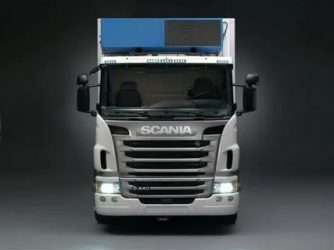
The Scania G400 is a Swedish-made truck that is most often used by truckers to transport goods over long distances. The main requirements for such cars are cabin comfort and build quality.
Swedish designers have successfully worked on this, so the driver has all the necessary conditions for safe work and good rest. Thanks to these qualities, the tractor has earned enormous popularity among both private carriers and large companies. The G400 is fully adapted to difficult weather conditions.
Therefore, this model is the best-selling truck in Russia among trucks of this class.
Distinctive features of the Scania G400 tractor
The G-series trucks are equipped with a more powerful engine than the P-series tractors. The G-series also features a more comfortable and spacious cabin. The ergonomics of the truck are organized in such a way that the driver will not get too tired during a long trip. A set of tools is included as standard. The car is equipped with a headlight leveling system.
The general characteristics of this model are as follows:
| Vehicle type | Truck tractor |
| Generation | R, P, G |
| Cabin | C.G. |
| Equipment | CBU |
| Engine capacity | 13 l |
| Suspension | Spring and pneumatic |
| Chassis: | |
| N (normal) |
| mainline (L) |
| Usage class | Heavy (H) |
| Wheels | 4x2 |
| Exploitation | Long-haul transportation of mixed cargo |
G400 is fully adapted to difficult weather conditions
Cabin structure
Trucks of this model are equipped with a Normal roof height (CG 19 N) double cab. Swedish designers managed to develop a very comfortable seat with the function of independently adapting to the driver’s weight, which belongs to the middle class of seats on air suspension with a stabilizer. The driver's seat is equipped with an adjustable shock absorber and heating. The passenger seat does not have suspension, but it can be easily folded.
Ecological car classes
Euro 1
- a standard that was the first small step towards protecting the environment from the harmful effects of automobile exhaust. The standards outlined in it applied only to gasoline-powered vehicles. Euro 1 established the maximum possible content of substances such as nitrogen oxide, carbon monoxide and hydrocarbons in exhaust gases.
In documents of the new type there is also a special line for this, where this information is written in words.
In PTS issued several years ago, the environmental class may be indicated in the column for additional information.
If your PTS does not say anything about whether the car belongs to a particular class, refer to the Rosstandart table.
Determine the environmental class of the car using the Rosstandart table.
The environmental class of a car can be determined using a special table.
It was compiled by the agency involved in vehicle certification, taking into account the standards in force in the country.
The table takes into account two main criteria: in what year the vehicle was produced and in what country. Among the producers are EU countries, as well as a number of other countries. At the same time, in order for the data in the table to be reliable, the compilers took into account not only UNECE standards, but also local legislative restrictions adopted in each of the designated states.
Although the table was developed in Russia and for Russians, our country is not on the list. The fact is that all environmental standards in the Russian Federation were introduced late compared to European countries, and for a long time they were completely absent.
It is a mandatory document that accompanies the car during its operational period.
